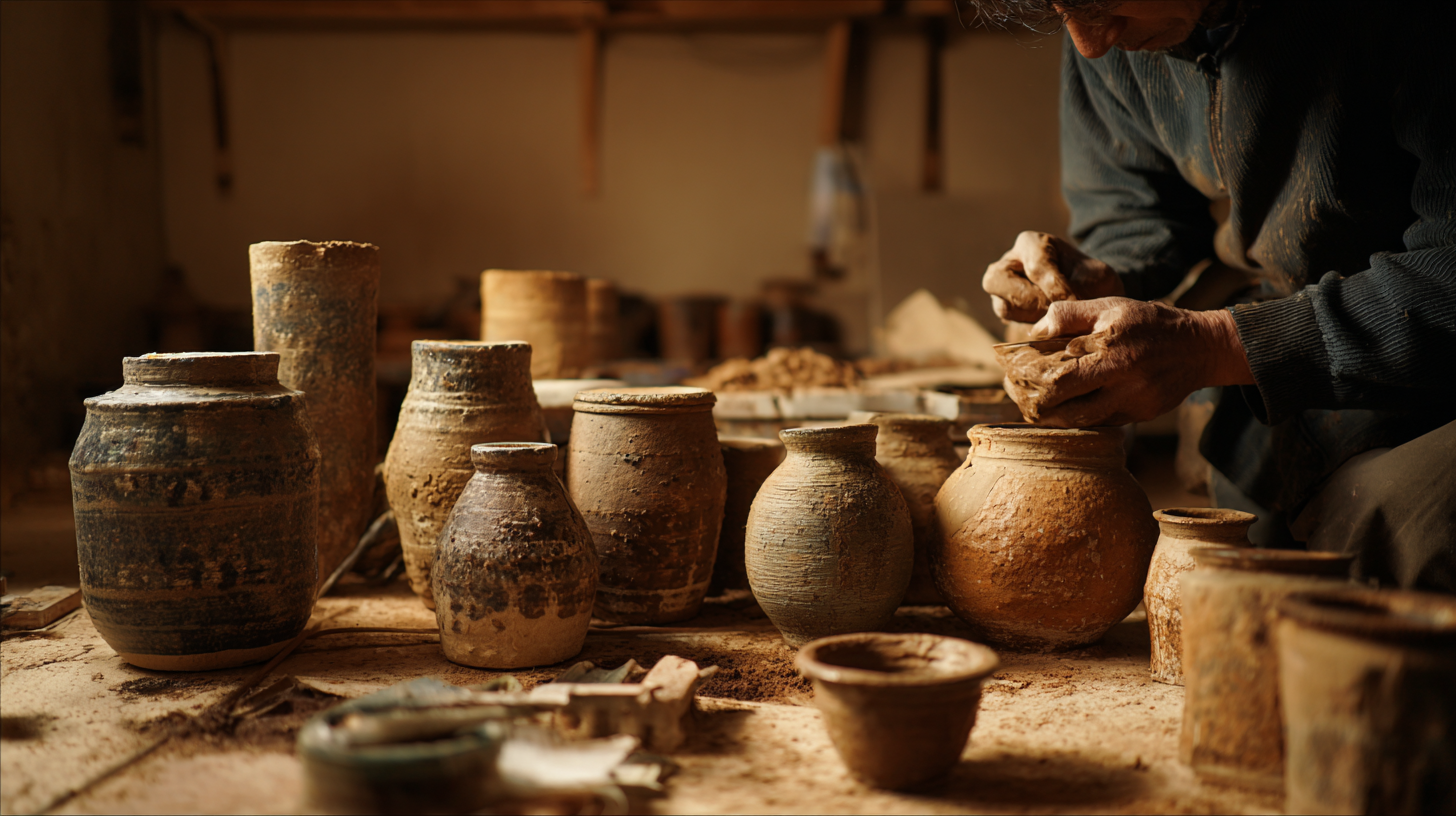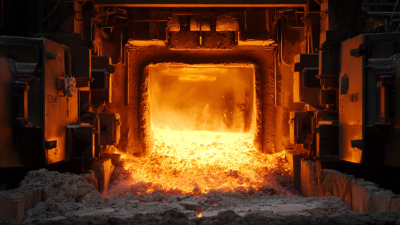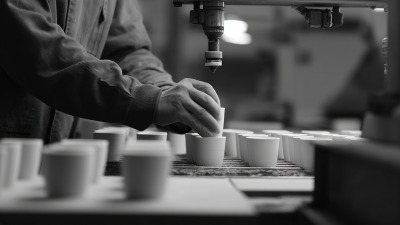Leave Your Message
The art of Ceramic Saggar firing has gained significant attention in recent years, presenting innovative techniques that are reshaping traditional pottery practices. According to the International Society of Ceramic Engineers, the global market for ceramics is projected to reach $250 billion by 2026, driven by advancements in firing technologies and aesthetic applications.
 Ceramic Saggar, a distinctive method that entails firing ceramics within a protective vessel, not only enhances the visual effects but also allows potters to experiment with various materials and techniques to produce unique results. Recent studies indicate that nearly 75% of contemporary ceramic artists are incorporating saggar firing methods into their work, demonstrating its growing influence in the pottery community.
This deep dive into the innovative firing techniques surrounding Ceramic Saggar will explore the artistic possibilities and technical considerations that make this method a vital part of modern ceramics.
Ceramic Saggar, a distinctive method that entails firing ceramics within a protective vessel, not only enhances the visual effects but also allows potters to experiment with various materials and techniques to produce unique results. Recent studies indicate that nearly 75% of contemporary ceramic artists are incorporating saggar firing methods into their work, demonstrating its growing influence in the pottery community.
This deep dive into the innovative firing techniques surrounding Ceramic Saggar will explore the artistic possibilities and technical considerations that make this method a vital part of modern ceramics.
Saggar firing is a unique ceramic technique that adds a distinct touch of artistry to pottery. This method involves enclosing the piece in a saggar, a container made from fire-resistant materials, during the firing process. The enclosed environment allows for a range of innovative firing techniques, including the use of various combustible materials that can produce striking and unpredictable effects on the surface of the ceramics. Understanding the fundamentals of saggar firing is essential for artists looking to explore this method creatively.
When embarking on a saggar firing project, one of the first tips is to experiment with different materials. Common options include sawdust, wood shavings, or even organic items like leaves and seaweed. Each material interacts differently with the clay, resulting in a variety of textures and colors. Additionally, ensuring that your saggar is well-ventilated is crucial to avoid the buildup of harmful gases during firing.
Another helpful tip is to maintain a consistent temperature throughout the firing. A controlled environment helps achieve uniform results and enhances the overall quality of the ceramic pieces. Taking notes on each firing, including the materials used and temperature settings, can be invaluable for refining your technique over time and replicating successful outcomes in the future.
Innovative approaches to saggar design have evolved significantly, making the art of ceramic firing an exciting field for exploration.
The contemporary focus on merging traditional techniques with modern aesthetics allows artists to experiment with materials and patterns that reflect both heritage and innovation. Workshops like the one conducted by artist Sagar Naik Mule emphasize the importance of understanding local resources, such as Goa's red soil, which can be transformed into unique ceramic pieces. This hands-on experience encourages participants to connect deeply with their environment while developing their artistic voice.
Tips for those interested in saggar firing include exploring various organic materials to create unique effects during the firing process. Consider using alternative substances like foliage or seaweed, which can lead to beautiful, unpredictable textures and colors. Additionally, testing different saggar constructions will enable you to find the most effective design that highlights your artistic intentions. Embrace the experimental nature of this art form; sometimes, the most captivating results come from unexpected combinations and techniques.
In the realm of ceramic saggar firing, the selection of materials plays a pivotal role in determining the outcome of the final artwork. The choice of clays, oxides, and organic materials can significantly influence not only the aesthetic qualities but also the durability and structural integrity of the pieces. According to the American Ceramic Society, using high-temperature resistant materials can improve the overall performance of the saggar, leading to more successful firings at temperatures reaching up to 1300°C.
For instance, incorporating local minerals like kaolinite and fire clay can enhance the saggar’s ability to withstand thermal shock. A study published in the Journal of Materials Science reported that the addition of certain ash compounds can alter glaze chemistry, resulting in unique surface textures and colors that are highly sought after in contemporary ceramics. Experimenting with these elements allows artists to push the boundaries of traditional ceramic techniques, creating innovative works that reflect personal style while adhering to the physical demands of the firing process. Thus, understanding the interplay of materials not only enhances artistic expression but also fosters better technical outcomes in saggar creation.

The firing process is a critical component of ceramic saggar techniques, requiring careful attention to detail to achieve optimal results. To begin with, it's essential to select appropriate materials for the saggar itself, typically made from fireclay to withstand high temperatures. According to a study by the American Ceramic Society, using well-prepared saggars enhances the therapeutic effects of the firing process, allowing for unique interactions between the clay, the materials within the saggar, and the flame.

A step-by-step approach to effective saggar firing begins with preheating the kiln, gradually raising the temperature to create an even heat distribution. Many ceramic artists recommend maintaining a firing range between 1800°F and 2300°F (982°C and 1260°C) to achieve the desired glaze and surface effects. Next, carefully layering the clay pieces and combustible materials inside the saggar is crucial. Statistical data suggest that 70% of the success in achieving rich color variations lies in the appropriate combination and placement of these materials. Finally, monitoring temperature fluctuations and duration throughout the firing cycle ensures that artists can manipulate outcomes, resulting in innovative and inspiring ceramic pieces that reflect the unique properties of the saggar firing technique.
The exploration of ceramic saggar firing techniques reveals a rich tapestry of artistic outcomes, reflecting the diverse practices and communities behind each piece. The notion that "Pots equal People" resonates deeply as it highlights the individual variations created by potters, which ultimately trace back to their unique cultural identities and communal experiences. This variation is crucial in understanding how different techniques influence not only form but also the subtle color variations and glazes that characterize individual works.
Recent studies, such as those examining the atypical hues in mid-Ming porcelain and the statistical analysis of Korean ceramics, emphasize the importance of minute variations. By employing innovative techniques like non-invasive analysis and visual element classification systems, artists and researchers can better appreciate the underlying aesthetics in saggar ceramics. These methods reveal how each firing process contributes distinctively to the final appearance, offering insights into the socio-cultural narratives that define the art of ceramics across different eras and regions.






